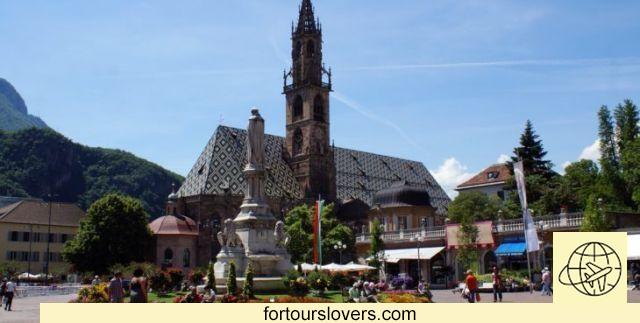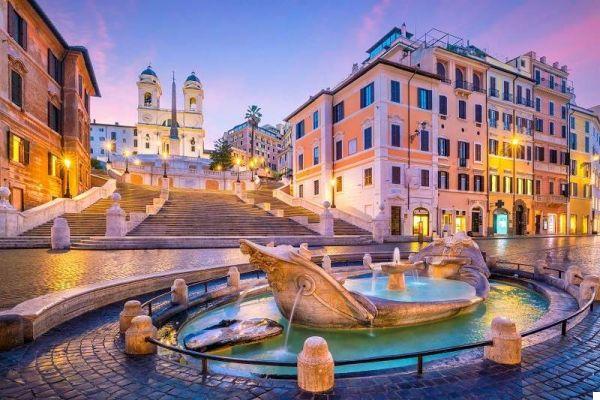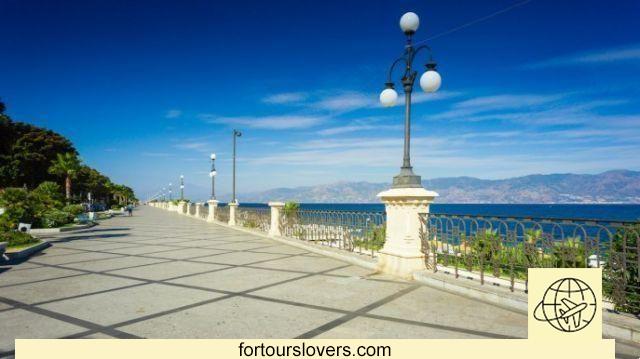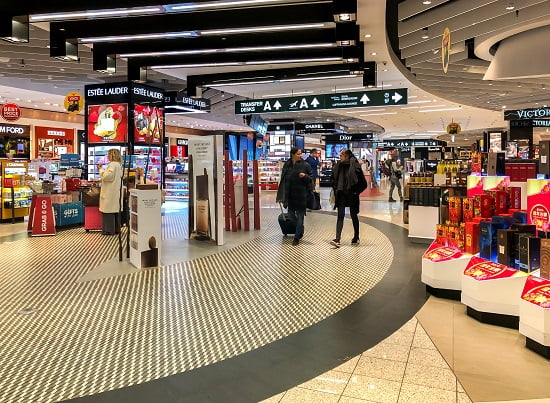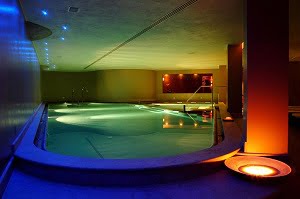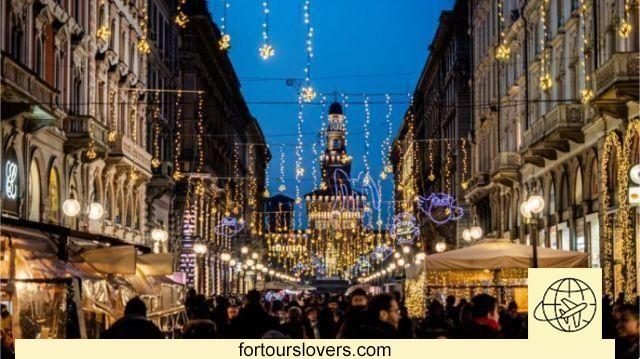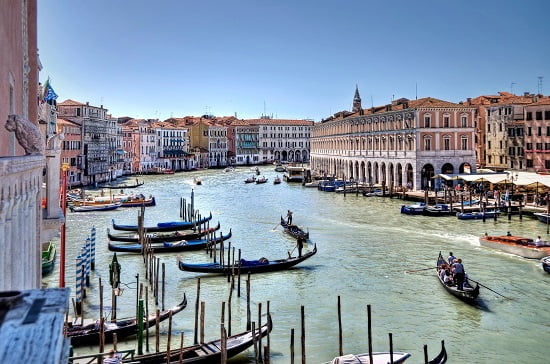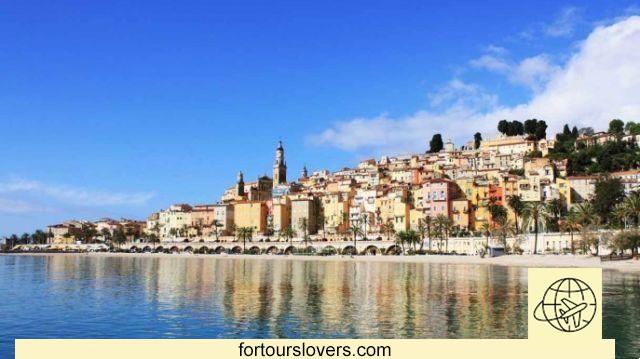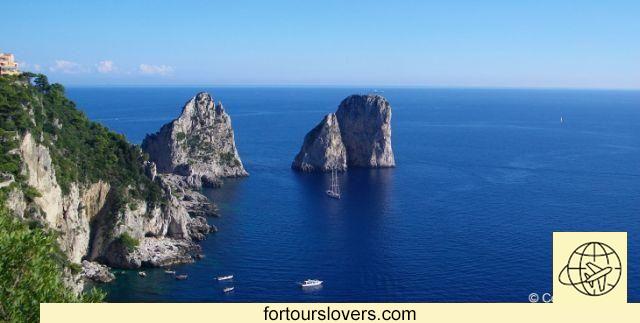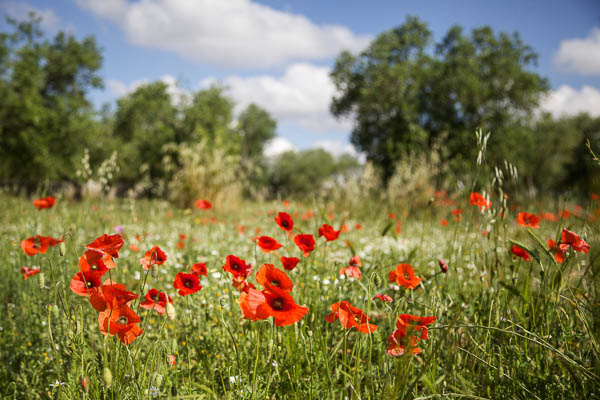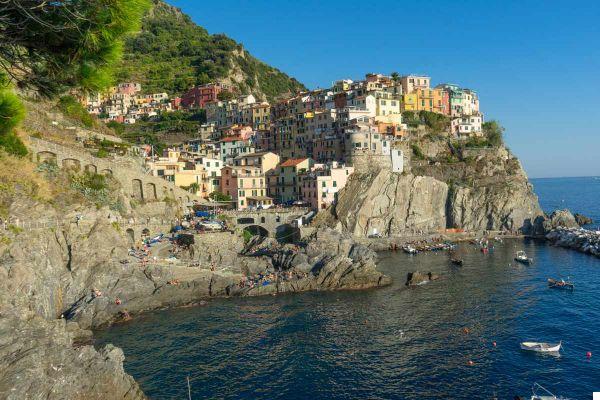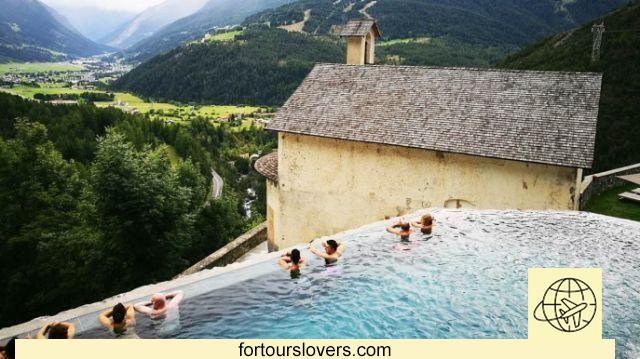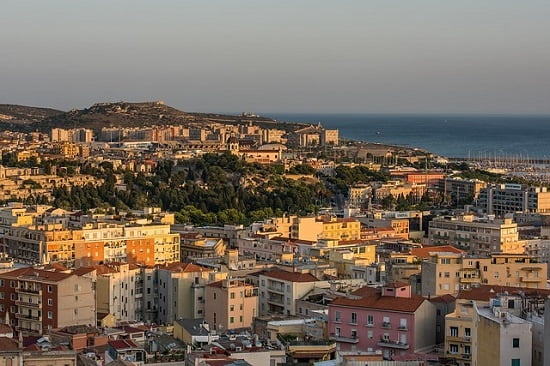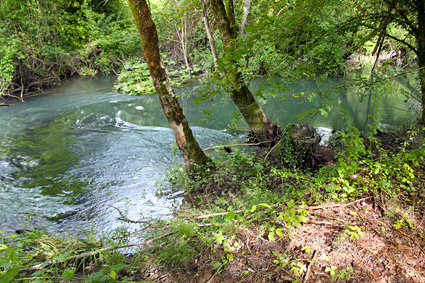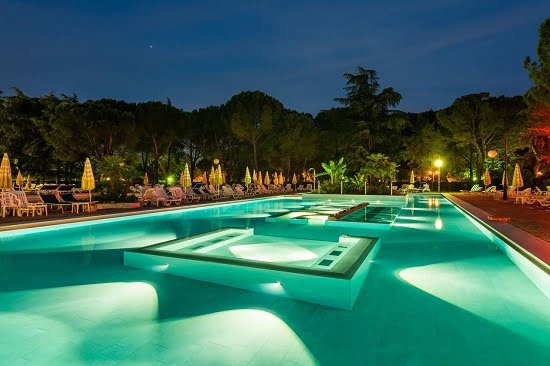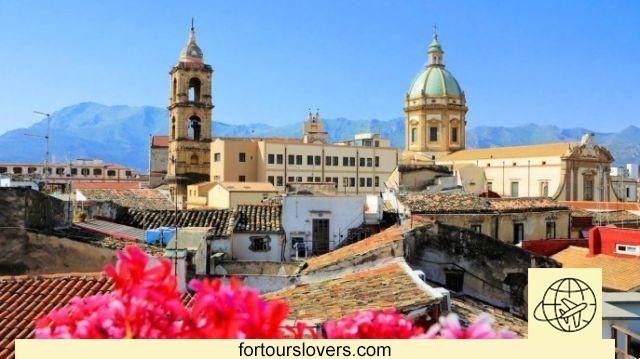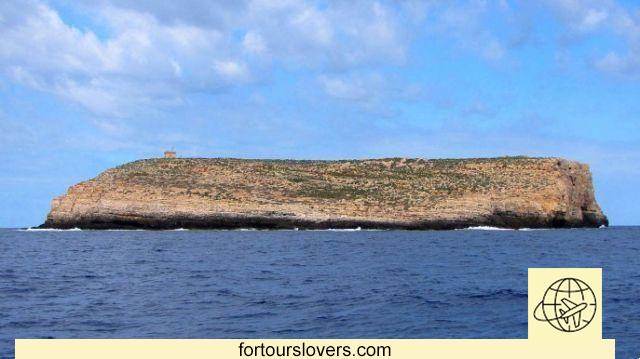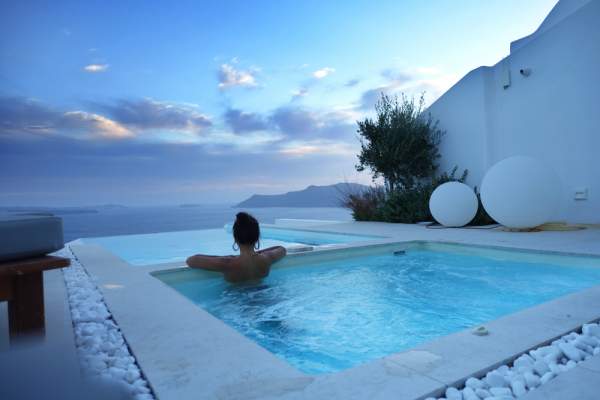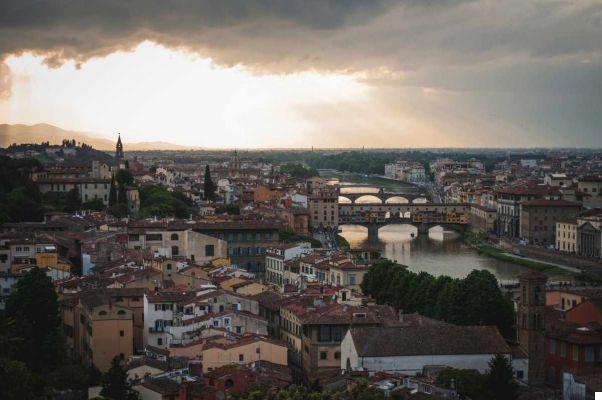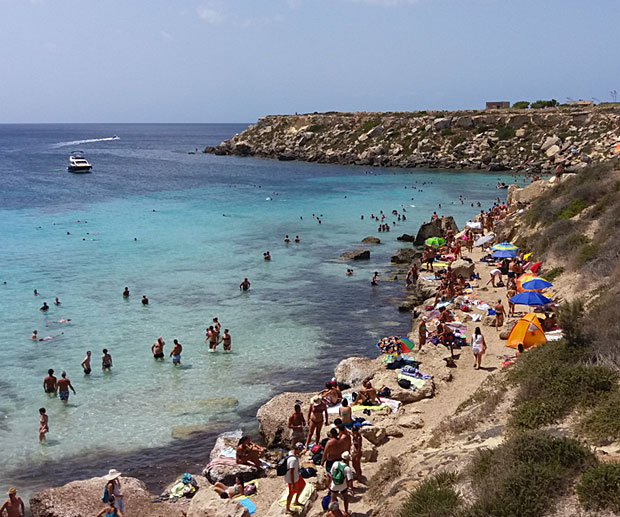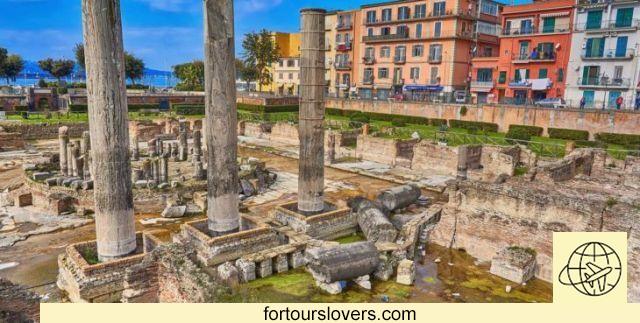
Pozzuoli
11 things to do and see in Pozzuoli and 1 not to doSince Temple of Serapis (see cover) al Rione Terra passing through theFlavian Amphitheatre and Solfatara without forgetting, of course, i historical treasures of the Phlegraean Fields, there are many things to do and see in Pozzuoli. Of course, the glories of the Roman era, when Puteoli was the most important seaport of the Empire, are far away, and I will be the city that gave birth to the great one Sophia Loren remained strategic for both the connections with the islands of Ischia and Procida which as a starting point for discovering Bay, Cuma and the much that there is to see in the surroundings. Below we discover together the main attractions of Pozzuoli. Happy reading.
1 Temple of Serapis
A few steps from the Cumana (railway service that connects Naples to the municipalities of the Phlegraean area) and the port, the Temple of Serapis is undoubtedly the symbol of Pozzuoli. There are two reasons that explain its popularity: first of all, because it testifies to the prestige of Puteoli in Roman times; secondly, because it represented a exceptional instrument for measuring bradyseism, a geological phenomenon consisting in a periodic lowering and raising of the ground level. Let's explore the two aspects a little better. The Temple of Serapis was discovered around the middle of the XNUMXth century on the impulse of King Charles of Bourbon who ordered the excavation of an area used as a vineyard from which three marble columns emerged. Excavation activities brought to light one statue depicting the Egyptian god Serapis; hence the initial idea that it was a place of worship - a temple in fact -, hence the name given to the area. Only later was it ascertained, however, that it was a Macellum, a Roman structure used as a public market with shops (in Latin, tabernae) open both to the outside and to the inside and distributed on two levels. Briefly said of the historical interest (in this regard, we point out that the statue of Serapis is kept in the Archaeological Museum of Naples) there is the naturalistic aspect to consider: Pozzuoli and the Campi Flegrei, in fact, are one of the most geologically unstable areas in the world, constantly monitored by INGV to predict any eruptions and / or earthquakes. Bradyseism testifies precisely to the uninterrupted volcanic activity, even if the reasons for which the water partially submerges the Temple of Serapis are not entirely clear, nor, on the contrary, why the slower phases of raising the soil follow the marine immersion. Be that as it may, even just seeing the Temple of Serapis from the outside gives a strong idea of being in the presence of one of the most important monuments of the ancient world.
2 Rione Terra
Rione Terra is the first residential unit of Pozzuoli. It stands on a spur of tufaceous rock just over 30 meters above sea level and experienced its heyday in the second century AD, when the port of Puteoli was the largest in the Roman Empire, a terminal for the import of grain produced in Egypt. In reality, the origins of the town date back to the Greek era, which speaks volumes about the thousand-year history of the Phlegraean city. Master proof of the historicity of the places and their inevitable urban stratification, was the discovery, in 1964, of the ancient Temple of Augustus. The place of worship of the Roman era had in the meantime been incorporated in City cathedral dedicated to San Procolo (see photo), and it was only a fire in the church that made it possible to find it. Rione Terra, which extends over two square kilometers, has gone through several complicated phases, mainly due to the aforementioned phenomenon of bradyseism. In 1970, for example, a seismic swarm suggested local authorities to evacuate the town. Again, ten years later, the earthquake with its epicenter in Irpinia caused further damage to the neighborhood. There rebirth of the Rione Terra it really started after the 1980 earthquake. A patient excavation campaign, together with the recovery of the countless archaeological traces that have survived over the millennia, allowed the area to be reopened to the public in 2014.entrance is in a side street of via Marconi, a few hundred meters from the port.
3 Flavian Amphitheater
A few minutes walk from the subway (Line 2 Pozzuoli - Solfatara stop) theFlavian Amphitheater is an unmissable stop on a visit to Pozzuoli. As already mentioned for the Temple of Serapis, here too the historical-archaeological importance of the site is immediately evident, second in size only to the Colosseum in Rome and the Capuan (or Campania) Amphitheater of Santa Maria Capua Vetere. Excavations began in 1849 and ended at the end of the nineteenth century even if the area was definitively cleared of debris only after the Second World War, to be precise in 1947. The structure, dating back to the XNUMXst century AD, is further proof of the importance assumed by Puteoli in the Flavian era. An area for gladiatorial shows whose environments, especially the underground from which the fairs were then conducted into the arena, have come down to us in excellent condition. It is not over, because the Flavian Amphitheater of Pozzuoli is associated with cult of San Gennaro. According to legend, in fact, San Gennaro should have been torn to pieces by the beasts of the Amphitheater together with the martyrs Festus, Desiderio and Sossio. Except that, after a blessing bestowed by the patron of Naples, the animals knelt in front of the saints whose execution was moved near the Solfatara. In memory of the saint's presence, a small church was built in 1689, which was then destroyed during excavations in the nineteenth century and subsequently replaced by a chapel which is still visible today. The Flavian Amphitheater of Pozzuoli is located in Via Terracciano 75, and is generally open from Monday to Saturday from 10.00 to 15.00.
4 Sandro Pertini seafront
In addition to places rich in history, Pozzuoli has another arrow in its bow: the seafront. Entitled to President of the Republic Sandro Pertini, the coast of the Phlegraean city is not alone the right place for long walks and, why not, a swim in the sea during the summer; is also the perfect place for outdoor sports (there is a beautiful basketball court) and for the nightlife. Along Via Napoli (the other name by which it is known), in fact, they follow one another pub, pizzerias, night clubs e restaurants. The latter, in particular, can count on fresh fish from the city's fish market. In short, raw materials of the highest level that explain the great notoriety of Phlegraean gastronomy. To be seen!
5 Avellino Park
The archaeological traces in Pozzuoli are numerous and it is very likely that if new excavations were allowed, other finds would emerge. For example, it is widely believed that around the Avellino Park, halfway between the historic center of Pozzuoli and the residential city, there are many Roman remains that have not yet seen the light. For now, we have to be satisfied - so to speak - with those described so far and with those present within this green lung in an urban area. Let's talk about two cisterns for the collection and sorting of water and a mask of the Flavian age (see photo) which, although found elsewhere, has been moved inside this park which has been owned by the municipality of Pozzuoli only since the 80s. To be seen!
6 Sanctuary of San Gennaro alla Solfatara
While waiting for the Solfatara to be visited again (it has been closed since 2017 following a tragic accident), one must "be satisfied" with a visit to the neighbor Sanctuary of San Gennaro (approx. 1 km away). We have already told the story: the saint from Benevento, patron saint of Naples, should have been executed in the Flavian Amphitheater but the beasts "in charge" of dismembering his body suddenly tame, forcing the Roman commander Dragonzio, who had ordered the killing of the saint, to move to the Solfatara where San Gennaro was finally beheaded together with the martyrs Festo and Desiderio. In the 1574th century a small early Christian church was built on the site of the murder, renovated and enlarged between 1580 and 1860. However, a fire that broke out in 1866 forced a new renovation of the church which was brought to an end immediately after the wave of plague in 1926. , with further embellishment in XNUMX. Last stop in 1945 with the elevation of the sanctuary a parish, as recognition of the popularity of the site, pilgrimage destination all year round with faithful from all over. A cult object, in particular, is a stone kept in a chapel on the right of the church where, according to legend, San Gennario was beheaded leaving two stains of blood still visible on the surface. In the days of the so-called miracle of San Gennaro (the liquefaction of the blood kept in the ampoules at the Cathedral of Naples) even the bloodstains present on the porous stone would participate in the miracle by taking on a more intense red color than usual. Matters of faith capable of moving thousands of people with all the tourist consequences that derive from it. To be seen!
7 Oasis of Monte Nuovo
Speaking of the Temple of Serapis we mentioned the seismic and volcanic instability of the Phlegraean Fields. A proof of the wonders of this volcano, considered even more dangerous than Vesuvius, is the Monte Nuovo, in the hamlet of Arco Felice, between Lake Lucrino and Lake Averno. It's about a hill of just 140 meters above sea level, covered with a luxuriant Mediterranean scrub (pines, holm oaks, strawberry trees, broom, myrtle, etc.) and with a prodigious view that embraces the entire Gulf of Pozzuoli. Aspects that explain the recognition of "naturalistic oasis" active since 1996 and which however do not represent the main interest of the area. The peculiarity of Monte Nuovo, in fact, lies in its genesis. It is aboutyoungest mountain building in Europe, formed in little more than a week, between 29 September and 6 October 1538, following a violent eruption. In addition to forming Monte Nuovo, the eruption destroyed a small village, Tripergole, famous for the beneficial scents of its thermal waters. Today, that of Monte Nuovo, it's a pleasant excursion also suitable for children. The paths lead visitors to discover the two volcanic cones that draw the hill with the possibility of taking wonderful photographs of the vegetation and landscapes all around.
8 Lake D'Averno
The violent eruption of 1538 that destroyed the village of Tripergole (see previous paragraph) saved instead Portus Julius, artificial port built in the XNUMXst century AD. C. fromRoman architect Marco Vipsanio Agrippa. An engineering work of the highest level, with eminently military functions, obtained by connecting the two lakes of the Phlegraean area, Lake D'Averno and Lake Lucrino, to the Gulf of Pozzuoli. Unfortunately, the aforementioned phenomenon of bradisimo has deprived us of the opportunity to visit the caves dug by the Romans to facilitate the entry of the sea into the two lakes of volcanic origin. However, mythical stories remain, such as those of Virgilio of Dante Alighieri which, respectively inAeneid and in Divine Comedy, they identified in the Lake Averno la gateway to the afterlife. A sinister fame due to the gaseous fumes of the area that in ancient times impregnated the air, driving away migratory birds (the toponym Averno comes from the Greek άορνος which means, in fact, "Without birds"), today instead present in large quantities. And in fact birdwatching is one of the most practiced activities in this place which, as we have seen, combines the naturalistic aspect with a centuries-old history, whose story also works as a tourist attraction. In recent years, following the wave of this rediscovery of Lake D'Averno, the numbers have multiplied guided tours, without prejudice to the possibility of reaching the town in full autonomy for a walk, a little jogging and, why not, a pleasant picnic by the lake. To be seen!
9 The surroundings of Pozzuoli
I surroundings of Pozzuoli offer wonders of the highest level: from Archaeological Park of the Terme di Baia, Submerged Archaeological Park of Baia, passing through the Archaeological Museum of the Phlegraean Fields up to Cave of the Sibilla, the territories of Bacoli and Cuma preserve treasures of inestimable value. A window on the ancient world that attracts thousands of visitors fascinated by the countless classical vestiges, mostly dated between the XNUMXst and XNUMXth centuries. that tell how the coast and l 'outback phlegrean had been chosen by Roman patricians like buen retiro or as a basis for managing one's own commercial traffic. Suffice it to say that theEmperor Hadrian, while Agrippina mother of Nero, found death near the Marina of Bacoli, killed by hit men in 59 d. C.. just on the orders of the son. But that's not all, because always in Bacoli, sul Fusaro lake, there is the beautiful Casina Reale (see photo), designed byarchitect Carlo Vanvitelli for the hunting fun of Ferdinand IV of Bourbon. Finally, woe to forget the panorama: get on the top of Capo Miseno it's another must-try experience. There view embraces both the Gulf of Pozzuoli and the Procida canal, coming up to Ischia, the largest of the islands of the Phlegraean archipelago.
10 The Phlegrean Islands
Ischia and Procida are both just a few miles from Pozzuoli. To reach the first one it takes an hour of navigation by ferry; for Procida, however, it takes about 40 minutes. Therefore, if after having filled up with museums and archaeological finds between Pozzuoli, Baia, Bacoli and Cuma, you want to visit Ischia, Procida (see photo) and also the little Vivara, the thing is very feasible. For the ferry timetables you see under:
11 Puteolan cuisine
Speaking of the city waterfront we mentioned the presence of restaurants mostly specialized in cuisine based on fish. The Phlegraean Fields (including the islands), can count on one very generous sea, with a'alternation of sandy bottoms, rocky e shallows where both species coming from the southern Mediterranean and those coming from the north find shelter and food (in the photo, fresh fish from the port of Pozzuoli). The result is fresh fish all year round it's a respect for the seasonality of raw materials greater than in other locations. Special mention for thebreeding of Bacoli mussels, not by chance renamed theblack gold of the Phlegraean Fields. Obviously, there is no lack of wine. Pozzuoli and the Campi Flegrei boast a centuries-old winemaking tradition which resists despite the fact that the area under vines is much smaller than in the past. Some of the most beautiful vineyards, specialized in the production of Falanghina (white) e Piedirosso (red) are located near the Lake Averno, which we talked about earlier. One more reason to visit a place where nature, culture and history also enter the cellar.
1 Watch out for traffic
Removed the natural dangers due to the seismic and volcanic instability of Campi Flegrei, risks with respect to which one cannot help but defer to the studies and plans of the experts, Pozzuoli has no particular contraindications. The only thing that needs a little attention in these parts is traffic: the one on the seafront, and especially the one near the port, with the possibility to remain bottled among the cars headed for boarding to the islands. Scenes that should no longer occur in the future - there is a municipal project for the construction of a rest area - but which in the meantime create many inconveniences, especially during the summer. There is no real way to avoid this inconvenience if not, perhaps, to calculate well the times of the journey by car, even more so if you have to take the ferry.




